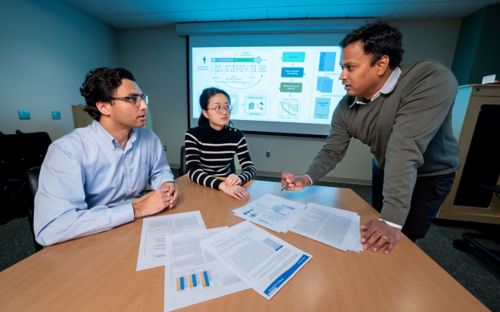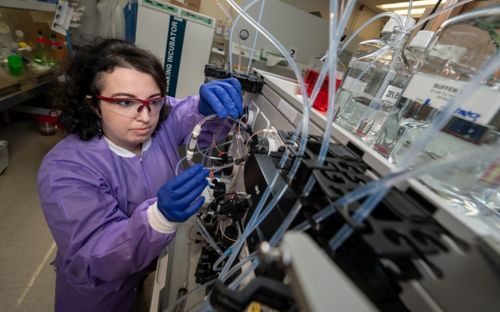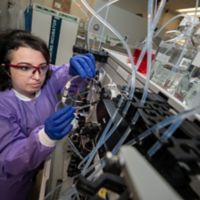The St. Jude Equations: A better method of calculating kidney function

Clinton Stewart, PharmD, and his lab designed a new formula to determine how well cancer patients’ kidneys are filtering blood. This way, they can determine the kidney’s ability to filter chemotherapy drugs.
It may be the 21st century, but there is still a role for equations that don’t require a super computer to solve. Just ask St. Jude Children’s Research Hospital investigators who recently developed a formula for calculating kidney function in pediatric cancer patients. This formula uses just two variables. The formula, along with a version using five variables, was recently reported in the journal Pediatric Nephrology.
The formulas, known as the St. Jude equations, give clinical pharmacists, physicians and other health care providers better tools for estimating kidney function in pediatric cancer patients compared to two equations that have been in widespread use for several years. The St. Jude equations also proved better at calculating chemotherapy doses.
Making it easier to assess the kidney function of young cancer patients
“These equations are important in settings when performing more accurate, but involved measurements of kidney function are not practical,” said Clinton Stewart, PharmD, of the St. Jude Department of Pharmaceutical Sciences. “Our goal in this project was to develop a formula that could be used daily at the patients’ bedside to assess kidney function and guide treatment.”
The equations calculate the glomerular filtration rate (GFR). The GFR estimates how well blood is being filtered by the kidneys. That is one way to measure how well the organ is functioning, especially when processing chemotherapy drugs like carboplatin that are often dosed based on the level of kidney function to avoid severe bone marrow toxicity. When time and resources allow, blood tests that track radiopharmaceuticals like the isotope technetium-99m DTPA or inulin clearance offer an even more accurate assessment of GFR.
The simplified St. Jude equation requires a patient’s height in centimeters and blood creatinine level in milligrams per deciliter. To calculate GFR using the five-variable equation, health care providers would also need the patient’s age, sex and results of another common test of blood urea nitrogen (BUN).
Tracking kidney function can help guide cancer therapy
Changes in the GFR may signal that it is time to adjust or change therapy, Stewart explained.
He and his colleagues developed the St. Jude equations after retrospectively calculating GFRs in 1,044 St. Jude cancer patients using two widely used equations. One of the equations—called the bedside Schwartz—was developed in children with chronic kidney disease. The other—the Brandt equation—was developed in children with solid tumors. All of these GFRs were compared to GFRs of the same patients as determined by the technetium-99m DTPA blood test, which is considered the “gold standard” for GFR in childhood cancer patients.
“Our study is important because not only did we find that previously published equations did not perform well in terms of bias or precision, but we studied a large number of pediatric cancer patients, including young children and infants,” Stewart said.
Biostatistics team helps craft the equations
Working with Yilun Sun and Li Tang, PhD, of the St. Jude Department of Biostatistics, the researchers developed the new St. Jude equations, and then independently compared the performance of those equations in a separate group of 570 technetium-99m DTPA tests conducted in St. Jude cancer patients. The St. Jude equations proved to be between twice and 30 times more accurate than established equations. Further testing showed the new equations were also better at matching carboplatin dose.
“Based on the accuracy and ease of use, we recommend using the new, simplified two-variable equation to estimate GFR in pediatric oncology patients,” Stewart said.






